
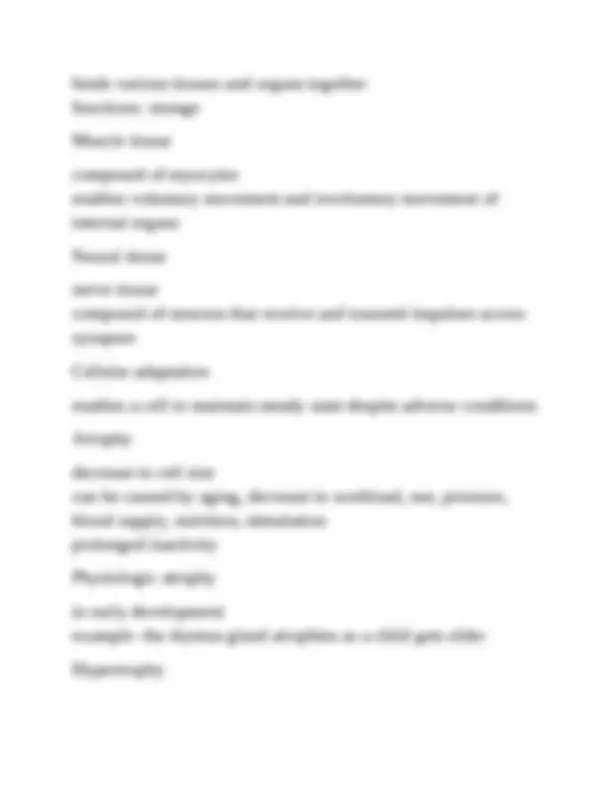
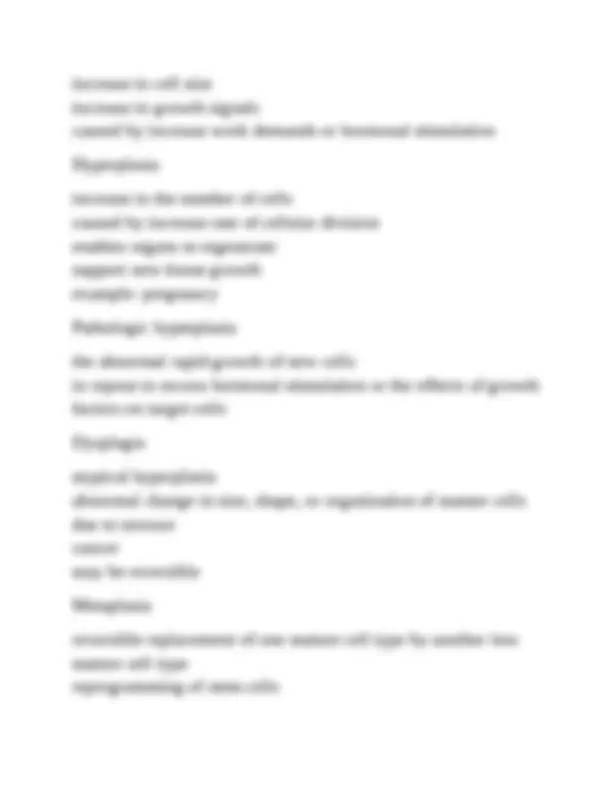
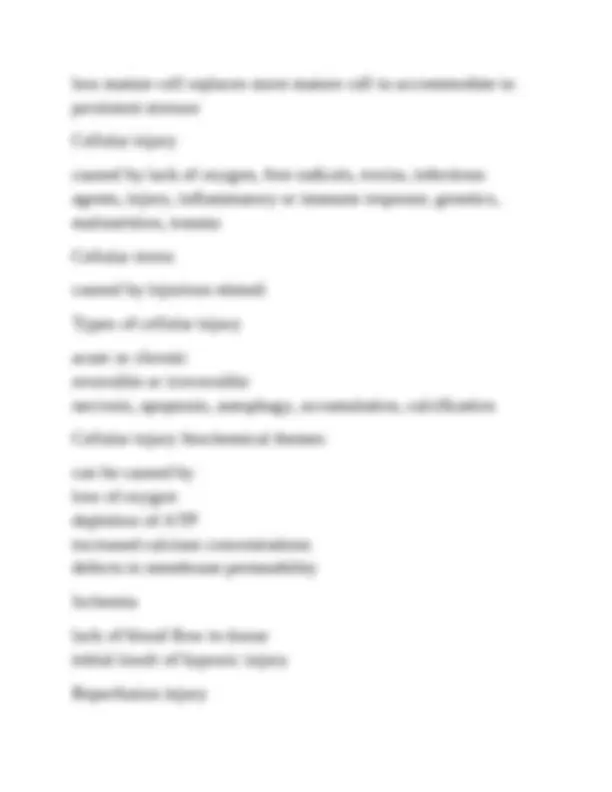
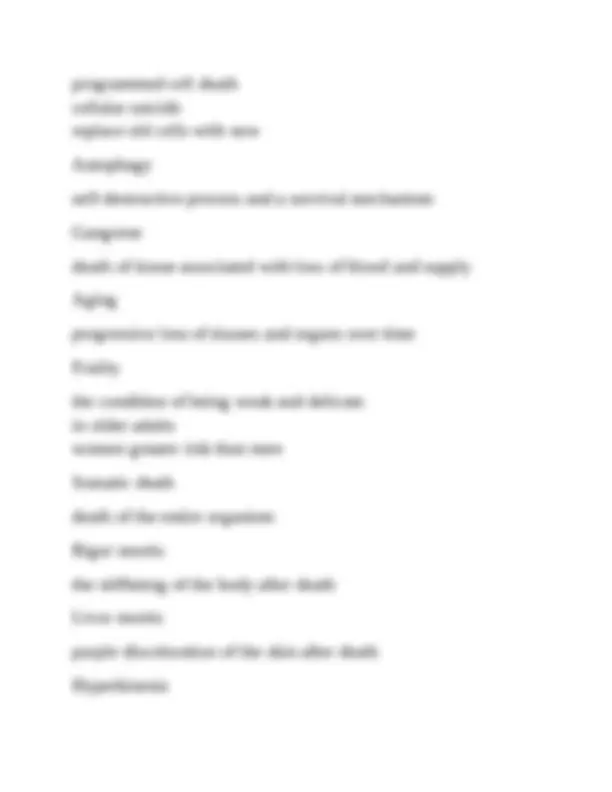
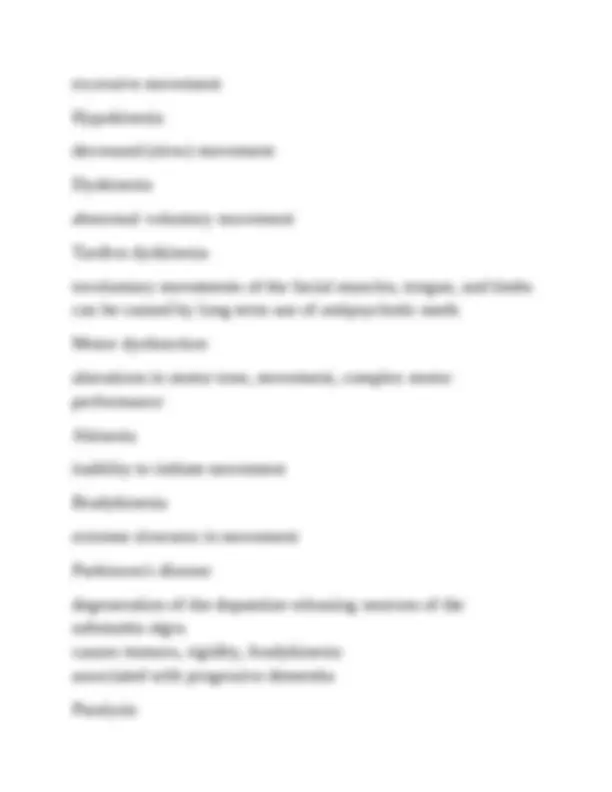
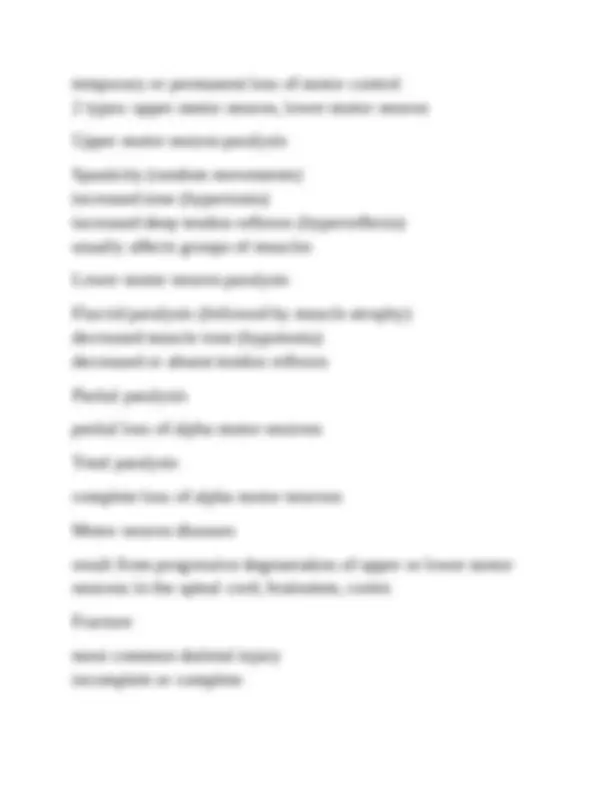
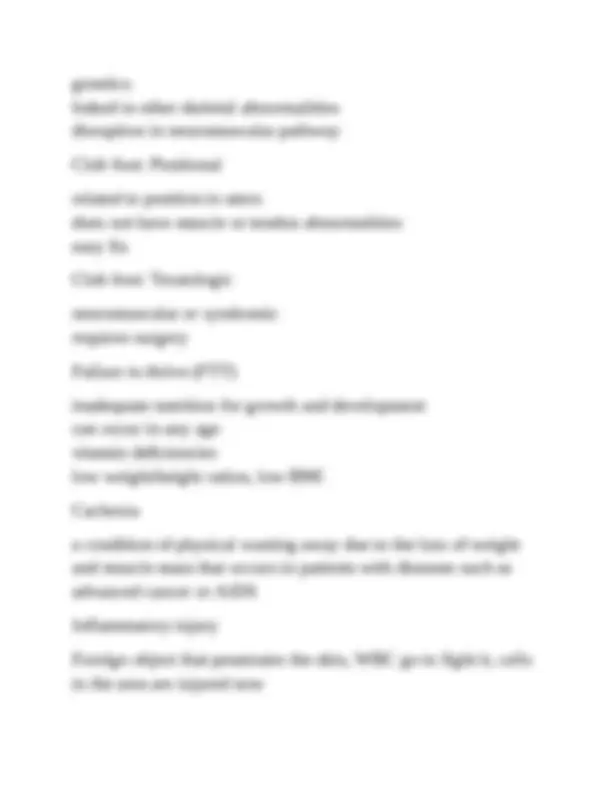
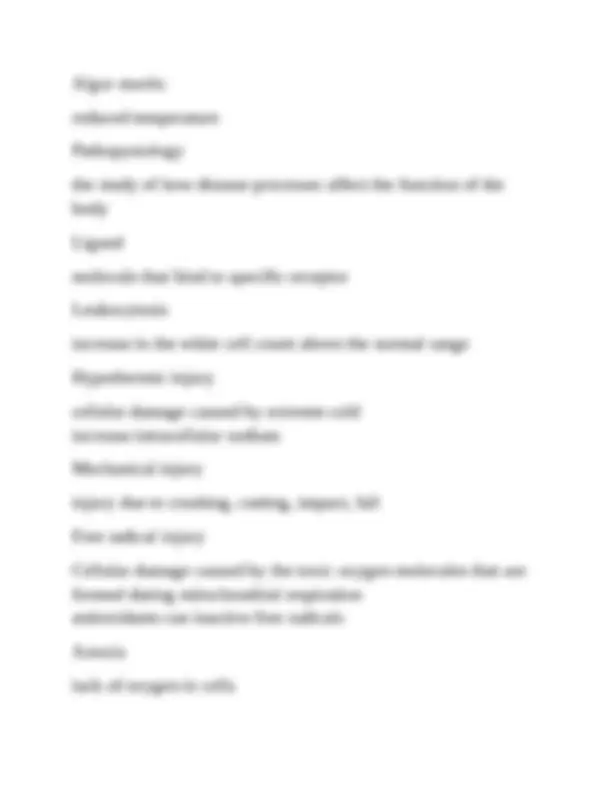
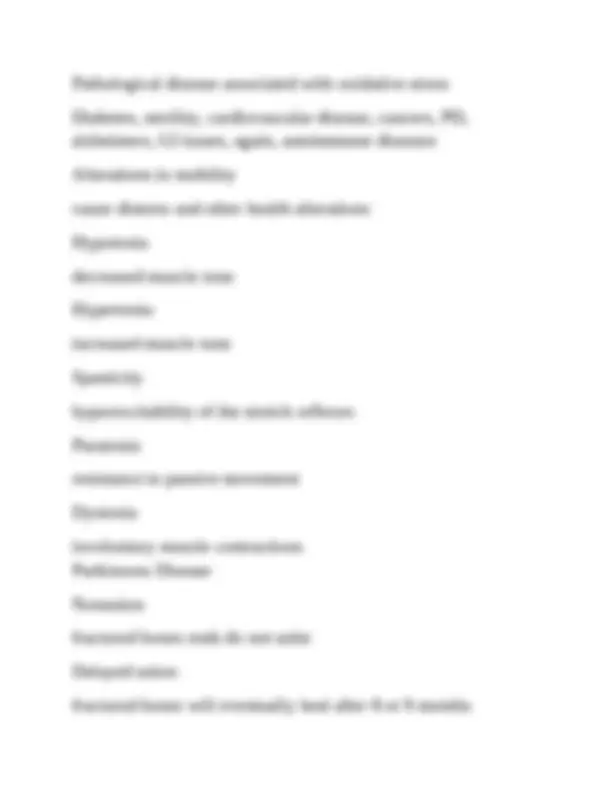


Study with the several resources on Docsity

Earn points by helping other students or get them with a premium plan


Prepare for your exams
Study with the several resources on Docsity

Earn points to download
Earn points by helping other students or get them with a premium plan
Community
Ask the community for help and clear up your study doubts
Discover the best universities in your country according to Docsity users
Free resources
Download our free guides on studying techniques, anxiety management strategies, and thesis advice from Docsity tutors
A comprehensive set of questions and answers covering key concepts in cellular biology and physiology. It explores topics such as cell differentiation, communication, adaptation, injury, and death. The document also delves into the mechanisms of cellular stress, including oxidative stress and chemical injury. It further examines various types of cellular injury, including necrosis, apoptosis, and autophagy. The document concludes with a discussion on alterations in mobility and skeletal injuries.
Typology: Exams
1 / 16

This page cannot be seen from the preview
Don't miss anything!










N312 Exam 1 Questions With Complete Solutions Differentiation process in which cells become specialized also called maturation Specialized cellular functions movement conductivity metabolic absorption secretion excretion respiration reproduction communication 3 ways cells communicate
neurohormonal neurotransmitter Signal transduction signals from extracellular chemical messengers that are conveyed in the cells interior for implementation Second messenger pathways cAMP and Ca++ Anabolism energy using process of metabolism Catabolism energy releasing process of metabolism ATP energy transferring molecule energy is stores and made into ATP in the mitochondria Types of tissue epithelial, muscle, neural, connective Epithelial tissue covers the surfaces of your body, inside and out functions: protection, absorption, secretion, excretion Connective tissue
increase in cell size increase in growth signals caused by increase work demands or hormonal stimulation Hyperplasia increase in the number of cells caused by increase rate of cellular division enables organs to regenerate support new tissue growth example- pregnancy Pathologic hyperplasia the abnormal rapid growth of new cells in repose to excess hormonal stimulation or the effects of growth factors on target cells Dysplagia atypical hyperplasia abnormal change in size, shape, or organization of mature cells due to stressor cancer may be reversible Metaplasia reversible replacement of one mature cell type by another less mature cell type reprogramming of stem cells
less mature cell replaces more mature cell to accommodate to persistent stressor Cellular injury caused by lack of oxygen, free radicals, toxins, infectious agents, injury, inflammatory or immune response, genetics, malnutrition, trauma Cellular stress caused by injurious stimuli Types of cellular injury acute or chronic reversible or irreversible necrosis, apoptosis, autophagy, accumulation, calcification Cellular injury biochemical themes can be caused by loss of oxygen depletion of ATP increased calcium concentrations defects in membrane permeability Ischemia lack of blood flow to tissue initial insult of hypoxic injury Reperfusion injury
injure cells by altering the nucleus and the plasma membrane's structure, shape, receptors, or transport mechanisms Cellular accumulation (infiltrations) harm cells by "crowding" organelles produce harmful toxins that are released into the cytoplasm or cellular matrix Cellular swelling accumulation of excess water in the cell caused by failure of transport mechanisms from cell injury can lead to necrosis Dystrophic calcification accumulation of calcium salts only occurs in injured or dead cells type of injury Gout caused when uric acid crystalizes in the joints inflammatory destruction of the joint Necrosis death of tissue associated with inflammation Apoptosis
programmed cell death cellular suicide replace old cells with new Autophagy self-destructive process and a survival mechanism Gangrene death of tissue associated with loss of blood and supply Aging progressive loss of tissues and organs over time Frailty the condition of being weak and delicate in older adults women greater risk than men Somatic death death of the entire organism Rigor mortis the stiffening of the body after death Livor mortis purple discoloration of the skin after death Hyperkinesia
temporary or permanent loss of motor control 2 types: upper motor neuron, lower motor neuron Upper motor neuron paralysis Spasticity (random movements) increased tone (hypertonia) increased deep tendon reflexes (hyperreflexia) usually affects groups of muscles Lower motor neuron paralysis Flaccid paralysis (followed by muscle atrophy) decreased muscle tone (hypotonia) decreased or absent tendon reflexes Partial paralysis partial loss of alpha motor neurons Total paralysis complete loss of alpha motor neurons Motor neuron diseases result from progressive degeneration of upper or lower motor neurons in the spinal cord, brainstem, cortex Fracture most common skeletal injury incomplete or complete
closed or open heals to form normal tissue Osteoporosis density or mass of bone is reduced because bone remodeling cycle is disturbed chronic disease most common bone disease Osteomalacia inadequate bone mineralization Osteoarthritis inflammatory joint disease degeneration of articular cartilage Contracture permanent shortening of a muscle caused by muscle spasticity seen in CNS injury or severe muscle weakness Myopathy disease of the muscle very common in alcohol abuse Ossification
genetics linked to other skeletal abnormalities disruption in neuromuscular pathway Club foot: Positional related to position in utero does not have muscle or tendon abnormalities easy fix Club foot: Teratologic neuromuscular or syndromic requires surgery Failure to thrive (FTT) inadequate nutrition for growth and development can occur in any age vitamin deficiencies low weight/height ration, low BMI Cachexia a condition of physical wasting away due to the loss of weight and muscle mass that occurs in patients with diseases such as advanced cancer or AIDS Inflammatory injury Foreign object that penetrates the skin, WBC go to fight it, cells in the area are injured now
Algor mortis reduced temperature Pathopysiology the study of how disease processes affect the function of the body Ligand molecule that bind to specific receptor Leukocytosis increase in the white cell count above the normal range Hypothermic injury cellular damage caused by extreme cold increase intracellular sodium Mechanical injury injury due to crushing, cutting, impact, fall Free radical injury Cellular damage caused by the toxic oxygen molecules that are formed during mitochondrial respiration antioxidants can inactive free radicals Anoxia lack of oxygen in cells
Malunion fracture heals in a nonatomical position